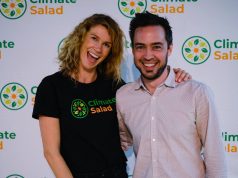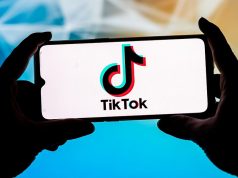The SBS Cycling Central Social Hub, powered by Australian social media start-up Stackla, has totally smashed key online success metrics since launching in late June. The Social Hub offers fans of the Tour de France a first-of-its-kind second screen social experience and has generated over 1,000,000 page impressions since launching at the start of the Tour.
The team at Stackla is already fielding enquiries from Canada, US and the UK within the first 3 weeks of launching, and plans to take the product to a global audience over the next six to 12 months. And at this stage, their main competitor is a Silicon Valley start-up called Backplane, funded by Lady Gaga and several other angel investors.
How exactly does Stackla work?
What Stackla does is collect and showcase rich social media content from SBS journalists, professional Tour riders, as well as teams and fans, allowing users to sort, rate and contribute to the social conversation around the world’s biggest annual sporting event. Ingenious if you ask me.
Stackla is at the forefront of an emerging trend, where brands and organisations are providing curated social media content to their fans, providing a more relevant & tailored social experience.
“Social media is an integral part of any sporting event we cover at SBS,” said Toby Forage, Executive Producer for Sport Online at SBS.
“Using the Tour de France as a vehicle to launch an innovative platform with the help of Stackla, something that brings the wealth of content across numerous social platforms to life visually, was an opportunity too good to miss. We have been delighted with the response from our audience, who are really enjoying the Social Hub.”
Why has Stackla enjoyed such a successful start?
One of the most exceptional results for SBS is the ‘stickiness’ of the site. Once you are there, it gets really hard to leave! Users generate more than 40 page impressions per visit and an average session time of 27 minutes.
These measurements are up to 10 times regular results. Stackla managing director Damien Mahoney suggests Stackla’s ‘sticky’ social experience is the missing link for brands wanting to leverage existing social media audiences.
“We always knew Stackla had the capacity to bring an event to life, so it works perfectly alongside the amazing coverage of the Tour that SBS is renowned for,” says Mahoney.
“Stackla allows brands to bring the social conversation into an environment they control while providing their fans with the best content from the most popular social platforms.”
“We are stoked to be working with such an innovative partner in SBS who saw the value in working with Stackla – a local, 100% Australian-owned company.”
What exactly is Stackla?
Stackla is a new social media aggregation application aimed at brands wanting to provide their fans with a tailored social media experience. It aggregates content from Facebook, Twitter, YouTube, Flickr and Instagram and orders it by relevance inside a simple-to-navigate interface.
Stackla’s unique relevance algorithm allows users to determine which social content deserves the greatest prominence, while the production tools allow an administrator to feature key posts. Effectively, it empowers fans to curate the brand’s social content. Users can use filters to determine exactly which content they which to view, and if they want the ‘fire hose’ live experience or the ‘curated’ social highlights.
This ensures fans are served the best social media content around a brand or event without having to scour all of the available social media platforms, accounts and hash tags. Mobile and tablet optimized stacks will be rolled out in coming weeks.
Stackla is the creation of Damien Mahoney and Peter Cassidy, ex-sports media types and owners of Pillar Sports, a Sydney-based digital agency. Damien was the inaugural editor of afl.com.au in 1998. He worked in online sports space for 14 years with News Ltd, Sportal, ninemsn, Macquarie Radio Network, National Rugby League. He is also the founder of digital sports agency, Pillar Sports and an AFL commentator on Triple M.
Their clients’ unquenchable thirst for content and social media led the pair to experiment with the concept of ‘crowd-sourcing’ event coverage – making the old content consumers the new content creators.






![Seven steps to crafting the perfect email, with James Tuckerman [FREE REPORT]](https://anthillonline.com/wp-content/uploads/2015/08/7-steps-cheatsheet-3d-cover-nuova--300x194.png)

![Need more leads? Here are five strategies [FREE DOWNLOAD]](https://anthillonline.com/wp-content/uploads/2016/04/james-FIVE-SIMPLE-STRATEGIES-TO-GET-MORE-LEADS-01-06.pdf-Box-2016-05-13-15-49-32-100x75.png)
![Do you have happy staff? 5 ways to improve performance [FREE DOWNLOAD]](https://anthillonline.com/wp-content/uploads/2016/06/chris-smith-cheatsheet-04c.pdf-Box-2016-06-30-20-45-20-100x75.png)
![Five essential ingredients for a humming homepage with James Tuckerman [FREE REPORT]](https://anthillonline.com/wp-content/uploads/2015/07/homepage-checklist-1680-01-copy-100x75.png)

![B2B marketing and social media: how to get valuable insights into your market [VIDEO]](https://anthillonline.com/wp-content/uploads/2013/10/GaryVaynerchuk-300x350.jpg)
![It was the night before Christmas, and all through the house, Tracy Morgan was ranting about a small mouse [VIDEO]](https://anthillonline.com/wp-content/uploads/2012/12/Fallon-300x341.jpg)
![How To Grow Your Business and Profits with Jason Cunningham [CHEAT SHEET]](https://anthillonline.com/wp-content/uploads/2015/07/Cunningham-300x194.png)
![Five ways to manage your time by managing yourself, with Helen Ebdon [CHEAT SHEET]](https://anthillonline.com/wp-content/uploads/2015/07/ebdon-3d-cover-01--100x75.png)
![How to market your business when you don’t have a business yet [CHEAT SHEET]](https://anthillonline.com/wp-content/uploads/2016/01/oli-gardner-memes-02-100x75.jpg)
![New Zealand’s Xero eyes US IPO, further disruption as subscribers increase [INFOGRAPHIC]](https://anthillonline.com/wp-content/uploads/2014/07/sruuuuujana-212x194.png)
![Ever wonder if your ‘content marketing’ is really just crap? You gotta see this! [INFOGRAPHIC]](https://anthillonline.com/wp-content/uploads/2014/08/content-100x75.jpg)
![7 Business Lessons From Game of Thrones [INFOGRAPHIC]](https://anthillonline.com/wp-content/uploads/2014/10/infographic-games-of-thrones-041-100x75.jpg)
![How to build your own Media Empire… In seven steps with Nathan Chan [INFOGRAPHIC]](https://anthillonline.com/wp-content/uploads/2014/10/Nathan-Chan-Infographic-e1413419529176-100x75.jpg)
![5 Business Lessons From Tinder [INFOGRAPHIC]](https://anthillonline.com/wp-content/uploads/2014/10/Tinder-Elegant-Infographic-100x75.jpg)



